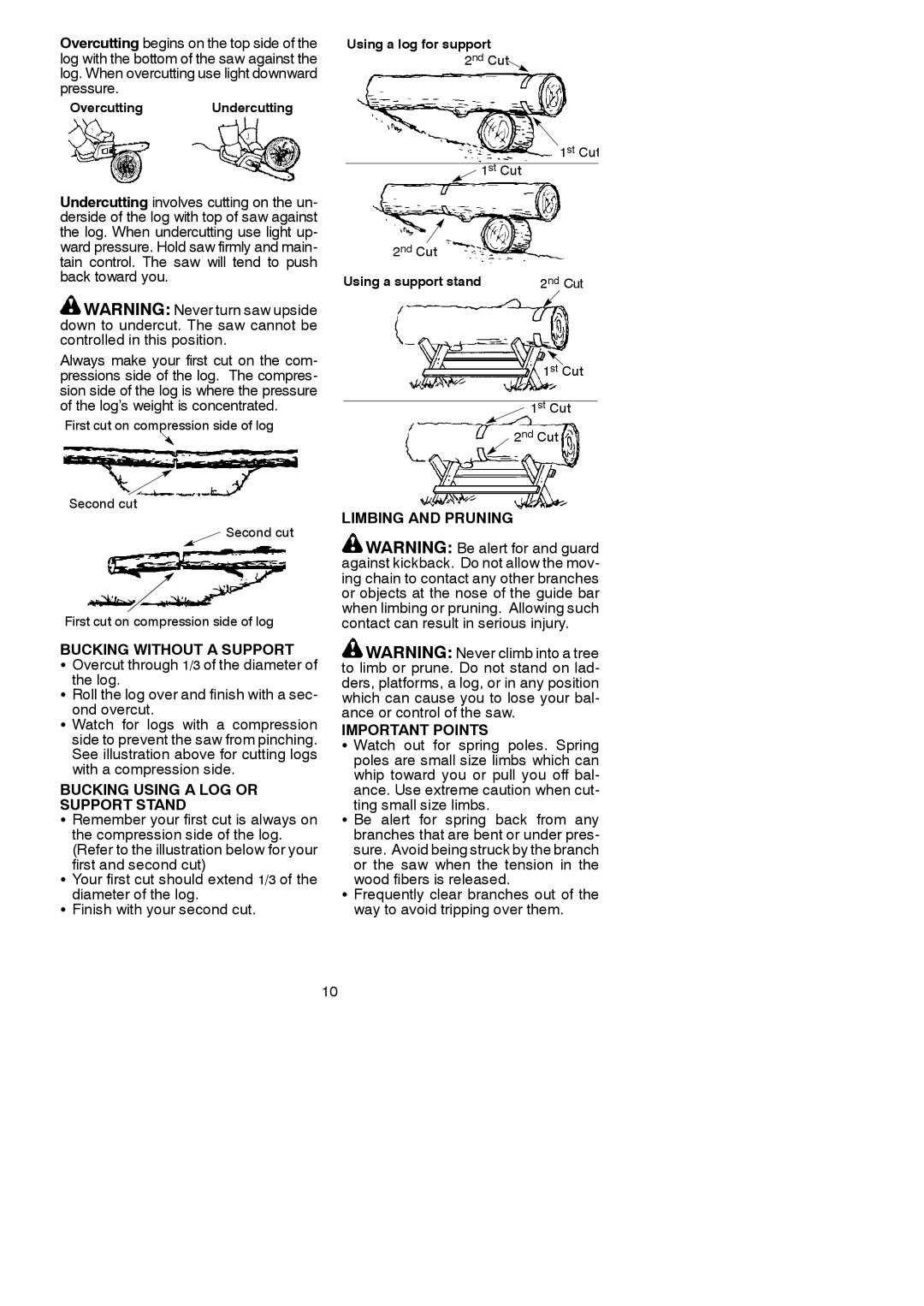
Overcutting begins on the top side of the log with the bottom of the saw against the log. When overcutting use light downward pressure.
Overcutting Undercutting
Undercutting involves cutting on the un- derside of the log with top of saw against the log. When undercutting use light up- ward pressure. Hold saw firmly and main- tain control. The saw will tend to push back toward you.
Using a log for support
2nd Cut
1st Cut
1st Cut
2nd Cut
Using a support stand | 2nd Cut |
![]() WARNING: Never turn saw upside down to undercut. The saw cannot be controlled in this position.
WARNING: Never turn saw upside down to undercut. The saw cannot be controlled in this position.
Always make your first cut on the com- pressions side of the log. The compres- sion side of the log is where the pressure of the log’s weight is concentrated.
First cut on compression side of log
Second cut
Second cut
First cut on compression side of log
BUCKING WITHOUT A SUPPORT
SOvercut through 1/3 of the diameter of
the log.
SRoll the log over and finish with a sec- ond overcut.
S Watch for logs with a compression side to prevent the saw from pinching. See illustration above for cutting logs with a compression side.
BUCKING USING A LOG OR
SUPPORT STAND
SRemember your first cut is always on the compression side of the log.
(Refer to the illustration below for your first and second cut)
SYour first cut should extend 1/3 of the
diameter of the log.
SFinish with your second cut.
10
1st Cut
1st Cut
![]() 2nd Cut
2nd Cut
LIMBING AND PRUNING
![]() WARNING: Be alert for and guard against kickback. Do not allow the mov- ing chain to contact any other branches or objects at the nose of the guide bar when limbing or pruning. Allowing such contact can result in serious injury.
WARNING: Be alert for and guard against kickback. Do not allow the mov- ing chain to contact any other branches or objects at the nose of the guide bar when limbing or pruning. Allowing such contact can result in serious injury.
![]() WARNING: Never climb into a tree to limb or prune. Do not stand on lad- ders, platforms, a log, or in any position which can cause you to lose your bal- ance or control of the saw.
WARNING: Never climb into a tree to limb or prune. Do not stand on lad- ders, platforms, a log, or in any position which can cause you to lose your bal- ance or control of the saw.
IMPORTANT POINTS
S Watch out for spring poles. Spring poles are small size limbs which can whip toward you or pull you off bal- ance. Use extreme caution when cut- ting small size limbs.
S Be alert for spring back from any branches that are bent or under pres- sure. Avoid being struck by the branch or the saw when the tension in the wood fibers is released.
S Frequently clear branches out of the way to avoid tripping over them.
